15 years one-stop China custom CNC machining parts factory
 99 |
Published by VMT at Dec 13 2024 | Reading Time:About 3 minutes
99 |
Published by VMT at Dec 13 2024 | Reading Time:About 3 minutes
Are you struggling with subpar off-the-shelf enclosures that never quite fit your product’s specifications, leading to poor protection, substandard aesthetics, or inadequate heat dissipation? Relying on generic housings often results in compromised product performance, wasted time on modifications, and missed opportunities to stand out in a crowded market. This can feel like a constant obstacle, preventing your device from reaching its full potential and keeping you behind competitors who invest in more effective solutions.
The frustration intensifies as you invest resources into these unsuitable enclosures, only to face ongoing issues like internal components rattling, misaligned ports, or poor durability. Your team might be forced to invest extra hours retrofitting standard shells, eroding productivity and driving up costs. Meanwhile, your clients or end-users may feel underwhelmed by a product that seems clunky or prone to failure, undermining your brand reputation and eroding customer confidence.
What if there’s a better way—one that ensures the housing fits perfectly, looks professional, and safeguards internal components efficiently? By choosing a custom-made shell, such as a CNC-machined parts shell or CNC-machined electronic product shell, you gain complete design freedom, precision, and reliability. Custom CNC-machined enclosures, made with the expertise of CNC-machined factories offering CNC prototypes and CNC-machined services, can revolutionize your product’s form, function, and longevity. In this guide, you’ll learn how to harness these capabilities to create the ideal housing, leaving behind the hassles of stock enclosures forever.
Choose a custom-made shell through custom CNC-machined services. First, design your CNC-machined electronic product shell with CAD software, then select suitable materials (like aluminum or stainless steel) and partner with a reputable CNC machining factory. Finally, validate prototypes, ensure proper finishes, and incorporate cooling features for a precise, durable, and high-quality housing solution.
Now that you understand the value of opting for a tailored, CNC-machined parts shell rather than settling for generic housings, it’s time to dive deeper. Next, we’ll explore what a custom machining housing truly is, discuss its practical uses, examine various manufacturing methods, and guide you through material selection, design tips, and choosing the right supplier. Let’s begin by clarifying the fundamental concept of a custom machining housing.
Preface
In today’s competitive electronics market, achieving excellence in product design and functionality is paramount. A well-crafted enclosure can make all the difference, ensuring that sensitive components remain protected, properly aligned, and efficiently cooled. Custom CNC-machined solutions offer unparalleled precision and flexibility, enabling you to create housings that match your product’s exact requirements. From complex geometries to the selection of metals or plastics, CNC machining provides a path to professional, durable, and visually appealing shells.
This basic guide will walk you through the essentials—explaining what a custom machining housing is, why it matters, and how to bring it from concept to reality. Whether you’re a startup developing a new consumer electronics device or an established manufacturer seeking to upgrade existing products, understanding these fundamentals will empower you to make informed decisions that elevate your product’s quality and market appeal.
A custom machining housing is a specialized enclosure designed and manufactured to meet specific dimensional, functional, and aesthetic requirements. Unlike off-the-shelf enclosures that offer limited sizes, materials, and configurations, a custom housing is tailored precisely to fit your device’s components and layout. By leveraging CNC-machined parts and custom CNC-machined techniques, you can achieve intricate shapes, tight tolerances, and unique features not possible with standard solutions.
Such housings can be made from a range of materials, including aluminum, stainless steel, or even engineered plastics. The result is a robust shell that holds internal components securely, allows for easy assembly, and provides the right balance between durability, weight, and cost. Custom machining ensures that every cut, hole, and surface finish aligns with your design intent, reducing the likelihood of assembly issues, rattling parts, or poor heat management.
In essence, a custom machining housing is your opportunity to create an enclosure that aligns with your brand’s identity, meets technical demands, and instills confidence in your customers—whether they be medical professionals handling sensitive instruments, automotive engineers integrating electronics into harsh environments, or consumers expecting sleek, user-friendly gadgets.
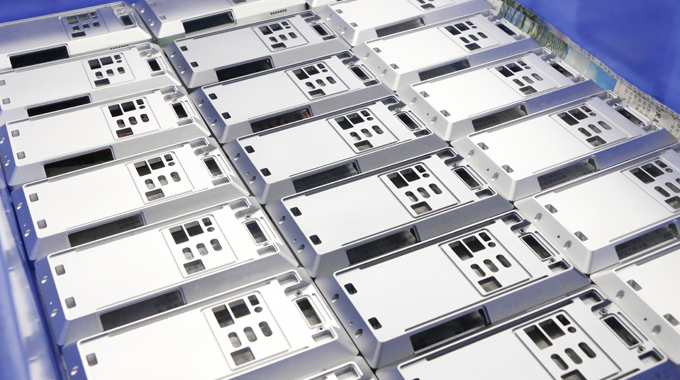
A custom housing’s primary purpose is to shelter and protect the electronic components of a device. Beyond mere protection, these housings ensure proper alignment of ports, connectors, and mounting points for internal circuitry. They facilitate efficient cable routing, improve EMC shielding, and optimize airflow or heat dissipation paths. Additionally, a custom enclosure can contribute to product branding by allowing unique shapes, colors, and logos that reflect your brand’s personality.
For example, in medical devices, a well-designed custom-made shell can meet strict regulatory standards while withstanding rigorous cleaning procedures. In telecommunications, a custom CNC-machined electronic product shell might offer advanced RF shielding for reliable signal integrity. In consumer electronics, a finely crafted enclosure can enhance the user experience through ergonomics and a premium look and feel.
Ultimately, custom housings ensure that each product achieves its desired performance, aesthetic, and compliance goals. By investing in a custom enclosure, you invest in your product’s long-term success and the satisfaction of end-users.
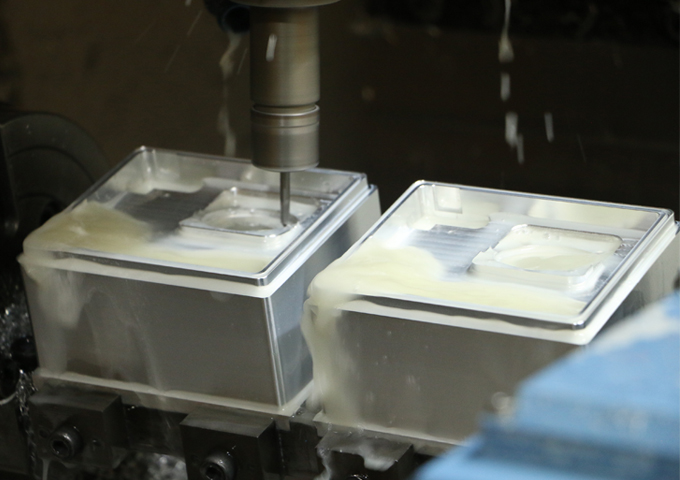
When it comes to enclosure materials, both metals and plastics have their merits. Metal enclosures—commonly aluminum or stainless steel—excel in strength, durability, and heat conduction. They’re ideal for rugged applications like automotive electronics or industrial controls. A CNC-machined parts shell made from aluminum, for instance, can dissipate heat efficiently while maintaining a lightweight structure.
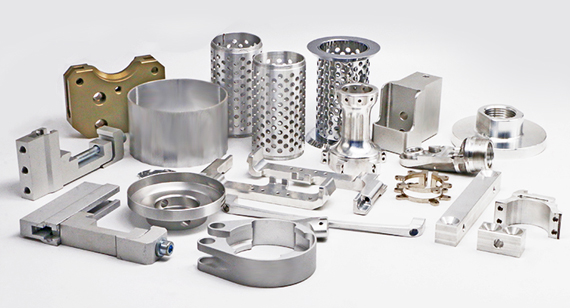
On the other hand, plastics can reduce weight, cost, and complexity. Engineering plastics such as polycarbonate or ABS are suitable for less demanding environments and can provide design flexibility at a lower cost. With careful design and proper reinforcements, a plastic enclosure can still protect internal components effectively.
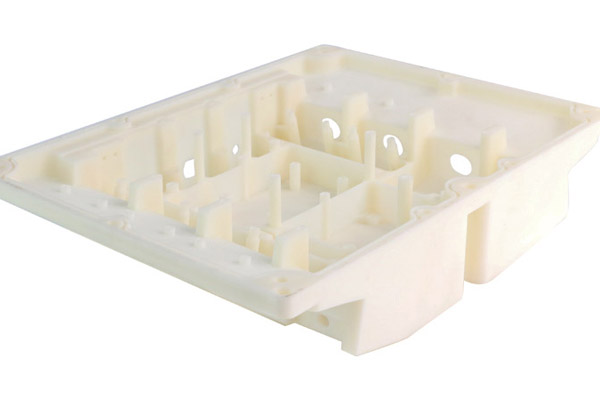
In some cases, a hybrid approach combining metal and plastic components might be the best solution. For instance, a metal internal frame can offer structural integrity, while a plastic outer shell provides an attractive, user-friendly exterior. The choice ultimately depends on factors like operating environment, budget, expected lifecycle, and product branding considerations.
To achieve a custom enclosure, you can choose from multiple manufacturing methods. Each approach has distinct advantages and limitations, and your decision depends on factors like production volume, complexity, lead time, and budget.
CNC machining remains a top choice for producing custom-made shells and CNC-machined electronic product shells. It excels in delivering precise tolerances, enabling complex geometries, and accommodating a wide range of materials. For low to medium production volumes or when prototyping, custom CNC-machined enclosures stand out for their flexibility and accuracy.
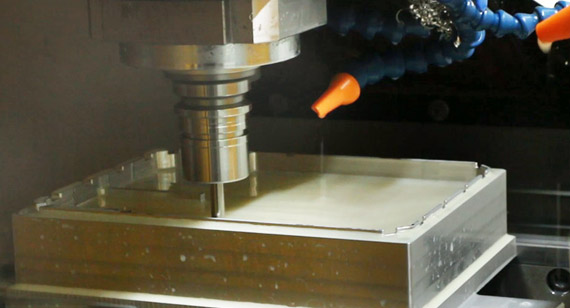
Sheet Metal Fabrication:
For larger enclosures or panels, sheet metal fabrication is a solid option. Bending, punching, and welding metal sheets into a defined shape is cost-effective, especially for medium to high-volume production. While it may offer less intricate detail than CNC machining, sheet metal fabrication provides robust, scalable solutions.
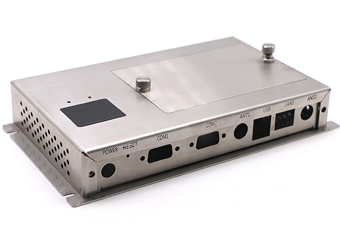
3D Printing:
Additive manufacturing, or 3D printing, allows rapid prototyping and complex internal features. Although not always ideal for mass production, it’s invaluable during the design and test phases. Once validated, the design can transition to CNC machining or molding for full-scale production.
Vacuum or Polyurethane Casting:
Vacuum casting is beneficial for producing small batches of plastic enclosures quickly. It provides improved surface finishes over standard 3D prints and is often used as a stepping stone between prototyping and injection molding.
Injection Molding:
For high-volume production, injection molding is king. It’s cost-effective once tooling is established and can produce consistent, high-quality plastic enclosures. However, initial mold costs are high, and lead times for tooling are longer compared to CNC machining services.
Material selection profoundly influences an enclosure’s performance. Metals offer strength, conductivity, and durability that many plastics cannot match.
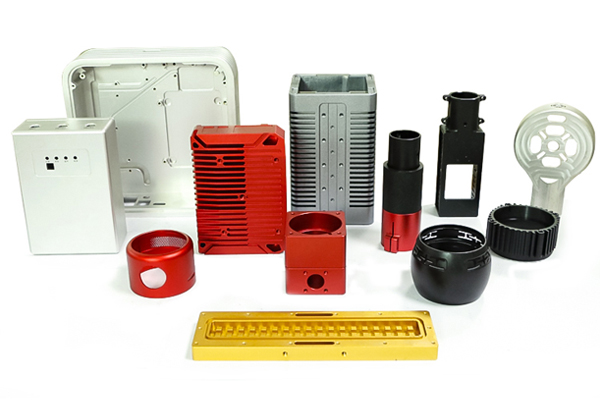
Aluminum:
Aluminum’s popularity stems from its light weight, corrosion resistance, and excellent machinability. It’s a top choice for CNC-machined parts shells in applications that demand both rigidity and heat dissipation. Aluminum enclosures suit consumer electronics, automotive electronics, and even aerospace components.
Stainless Steel:
Stainless steel boasts exceptional strength, corrosion resistance, and a professional finish. Although heavier than aluminum, it endures extreme conditions, making it suitable for medical devices, outdoor electronics, and rugged industrial controllers.
Galvanized Steel:
Galvanized steel adds a zinc coating to steel, improving corrosion resistance. It’s a budget-friendly solution for cases where weight is less critical, such as large telecommunications equipment enclosures or industrial cabinets that must withstand harsh, corrosive environments.
CRCA (Cold Rolled Close Annealed) Steel:
CRCA steel provides good dimensional accuracy, smooth surfaces, and uniform mechanical properties. It’s often used for custom-made shells where cost, strength, and formability matter. Coatings or paint can enhance its corrosion resistance and appearance.
Opting for a custom CNC-machined enclosure unlocks multiple advantages that directly impact product success.
Design Flexibility:
With custom CNC-machined services, you can realize virtually any shape, integrate complex features, and achieve the exact dimensions your design requires.
Precision and Accuracy:
CNC machining ensures tight tolerances, guaranteeing that ports align perfectly, components fit snugly, and assembly is straightforward.
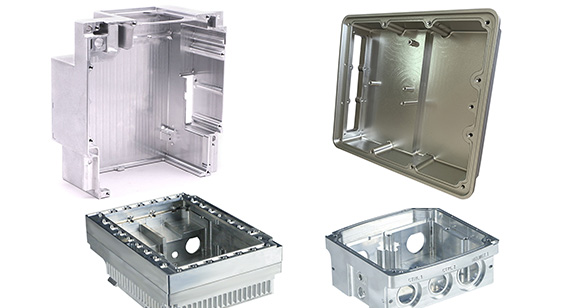
Material Versatility:
From aluminum to stainless steel, the choice is yours. CNC machining allows you to pick the material that best suits your device’s environment and performance needs.
Durability and Strength:
CNC-machined parts shells are inherently robust. They can withstand impacts, vibrations, and challenging conditions, prolonging product life and reducing failures.
CNC machining delivers superior surface finishes, ready for anodizing, painting, or powder coating. This results in professional aesthetics that impress customers.
Improved Heat Dissipation:
Metal housings can act as heat sinks, dispersing generated heat. Properly designed CNC-machined enclosures keep sensitive electronics cool, enhancing reliability.
Successful enclosure design requires a holistic approach, balancing technical, aesthetic, and practical considerations.
Purpose and Work Environment:
Define your enclosure’s intended use. Is it for indoor consumer devices or outdoor industrial equipment? Understanding the environment shapes material choices, sealing needs, and compliance standards.
Match the material to your device’s requirements. For maximum durability and conductivity, consider aluminum or stainless steel. For cost savings and lighter weight, plastics or composites might suffice.
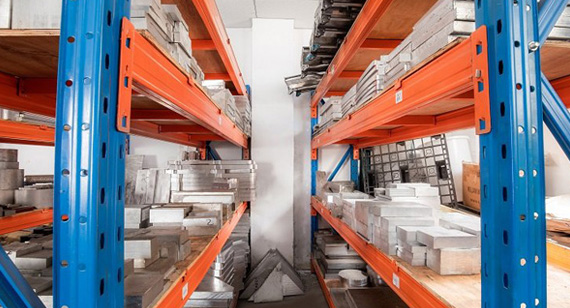
Design Software:
Use CAD tools to model your enclosure. Virtual prototyping allows you to simulate fit, assembly, and stress points. Early detection of design flaws saves time and cost downstream.
Cabinet Layout:
Arrange internal components logically, ensuring easy access for maintenance and assembly. Maintain proper spacing for connectors, cables, and cooling systems.
Ventilation and Cooling:
If your device generates heat, integrate vents, heat sinks, or fan mounts. CNC machining can create precision airflow channels, optimizing temperature management and preventing component damage.
Custom enclosures play critical roles in various industries, enhancing device performance, safety, and user experience.
Precision and reliability are paramount in medical equipment. Custom CNC-machined parts shells support sterilization, regulatory compliance, and patient safety.
From smartphones to home automation hubs, tailored housings allow sleek designs, premium feel, and optimal ergonomics.
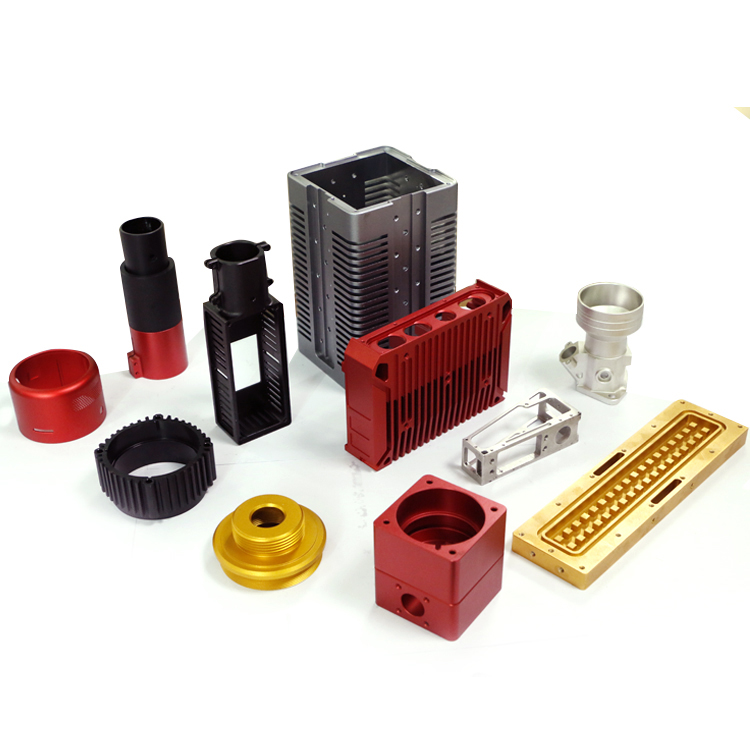
Telecommunications:
In telecom, robust enclosures protect delicate signal processing hardware from environmental stress, ensuring dependable network performance.
Custom housings safeguard sensors, ECU modules, and infotainment systems against vibrations, extreme temperatures, and moisture.
Aerospace:
Lightweight, strong, and precisely engineered enclosures help avionics meet strict weight and safety criteria in aircraft and spacecraft.
Outdoor Gear:
Enclosures for outdoor or rugged use must resist water, dust, and shock. Custom machining ensures a tight seal and long-lasting durability.
Selecting a reputable CNC machining factory offering CNC prototypes and CNC-machined services is essential. Look for manufacturers with a track record of delivering quality, accuracy, and timely results. Evaluate their material expertise, equipment capabilities, and engineering support. Request samples or prototypes to assess their craftsmanship before committing to a larger order. Good communication, transparency in pricing, and responsiveness to design changes are hallmarks of a reliable partner.
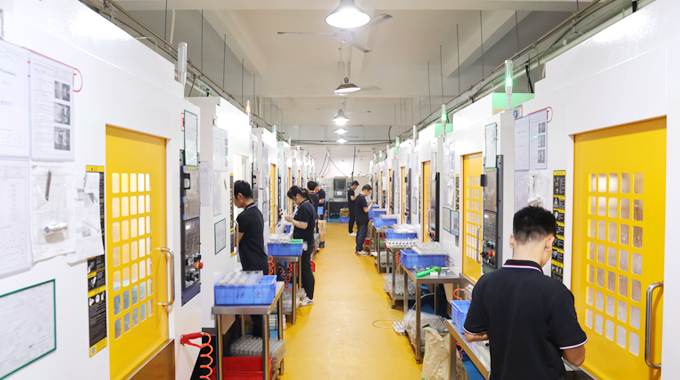
Creating a custom machining housing for your electronics doesn’t have to be complicated or risky. By embracing CNC machining and leveraging the expertise of CNC-machined factories, you can develop a custom-made shell that matches your product’s technical requirements, brand identity, and market demands. With careful design, material selection, and methodical manufacturing, your CNC-machined parts shell will enhance device performance, aesthetics, and longevity, ultimately delighting customers and strengthening your position in a competitive industry.
What are enclosures in electronics?
Enclosures are protective housings that shield electronic components from external factors like dust, moisture, impact, and electromagnetic interference. They also provide a structured layout for components, simplifying assembly and maintenance.
Which aluminum is best for machined enclosures?
Aluminum alloys like 6061 or 6063 are common choices for CNC-machined electronic product shells. They offer a balanced mix of strength, machinability, and corrosion resistance.
What is the best way to design an enclosure?
Start with clear requirements, use CAD software for virtual prototyping, consider environmental and regulatory needs, and iterate with CNC prototypes. Testing and refining the design early leads to better final results.
Why are appliance enclosures so expensive?
High-quality custom CNC-machined enclosures can be pricier due to material costs, precision machining, surface treatments, and low-volume production. The investment pays off in reliability, durability, and product appeal.
What is the best material for enclosures?
The “best” material depends on the application. Metals like aluminum or stainless steel offer strength and thermal conductivity, while plastics can reduce weight and cost. The right choice aligns with your product’s performance goals and environment.
